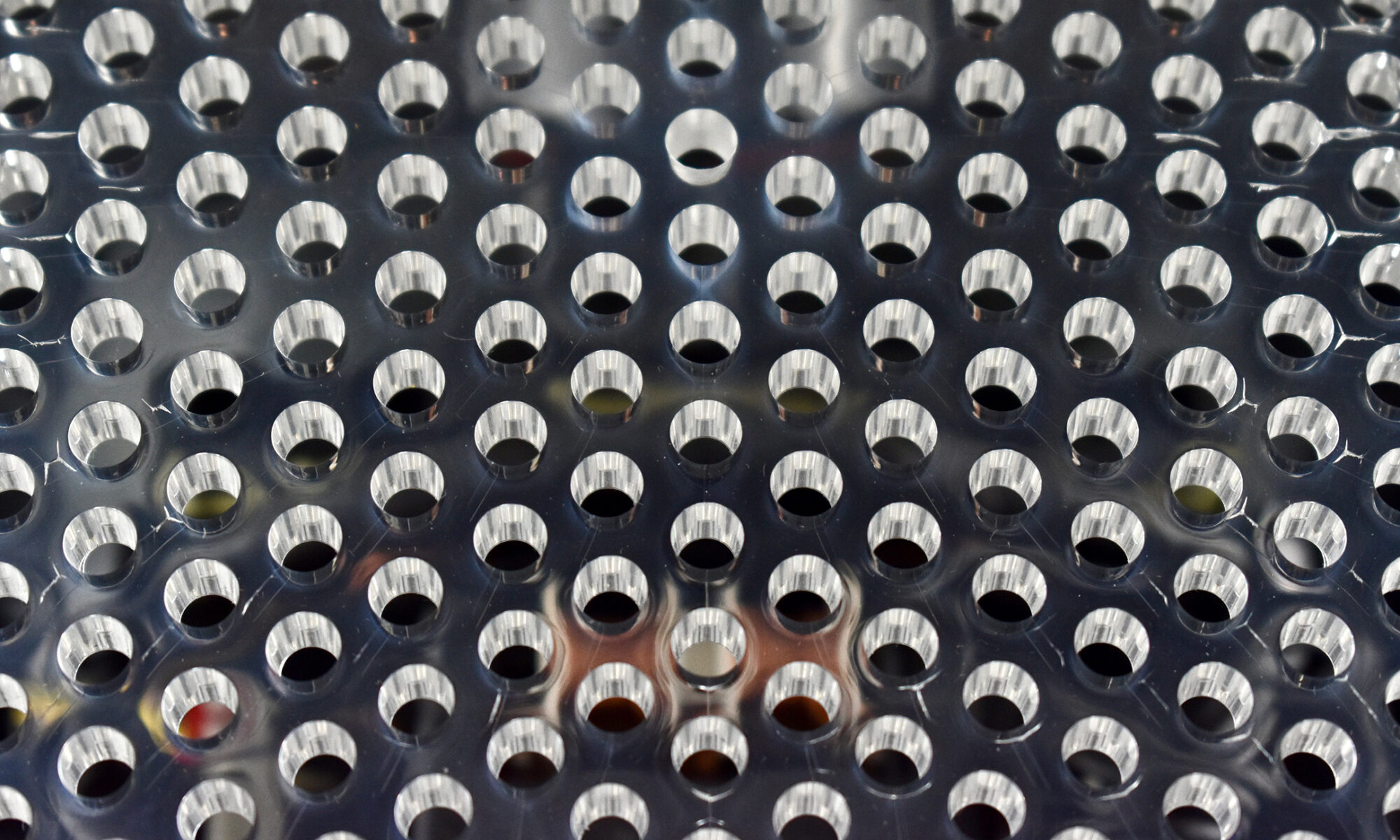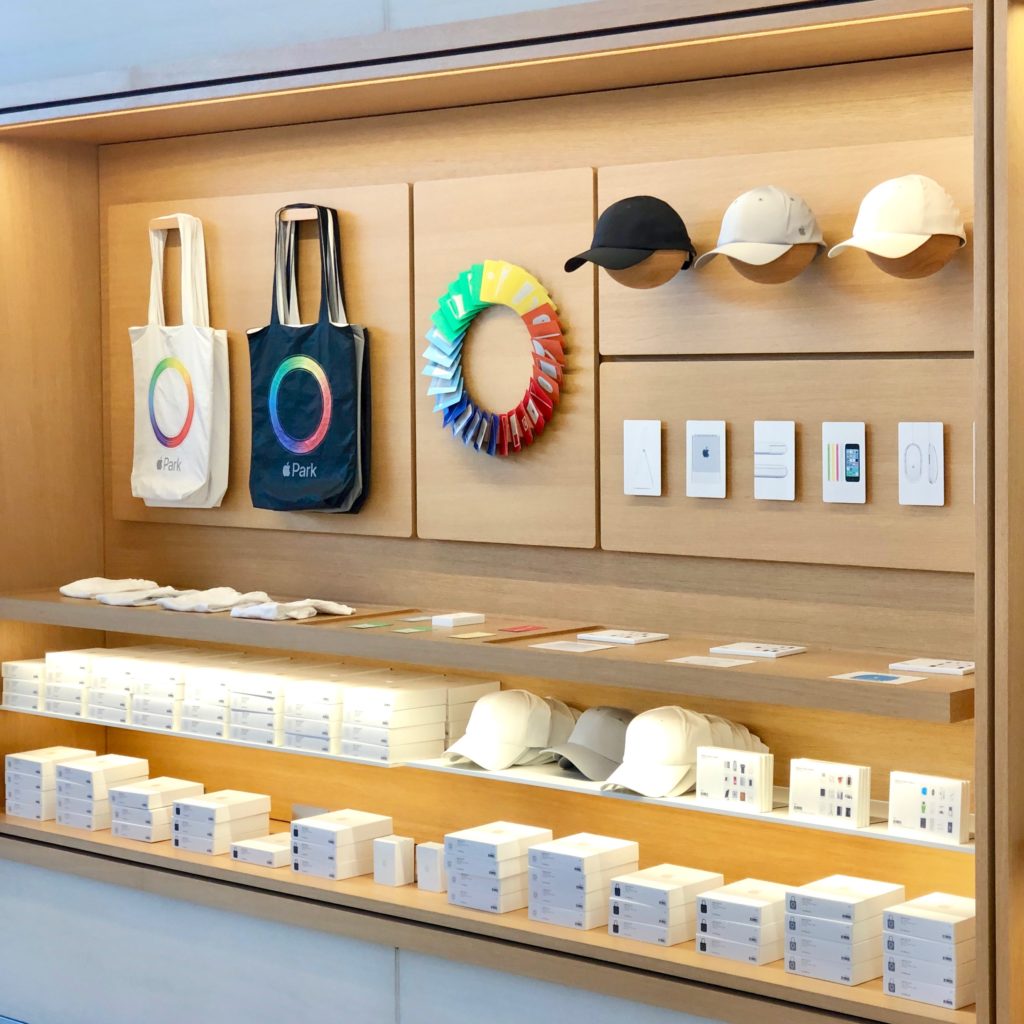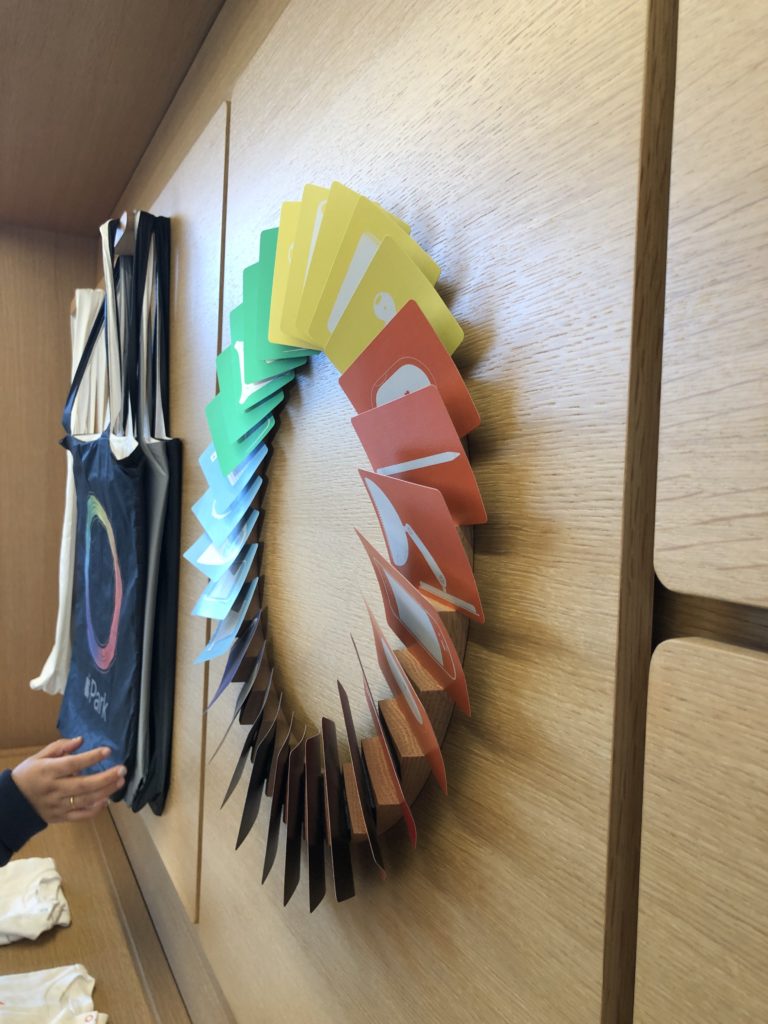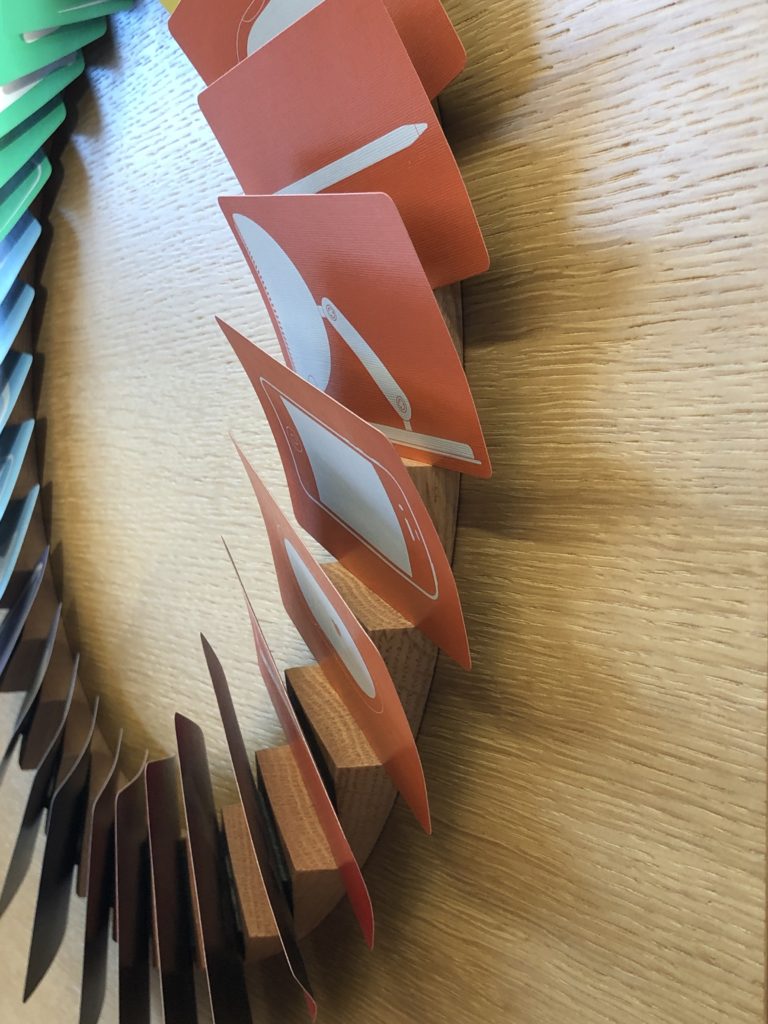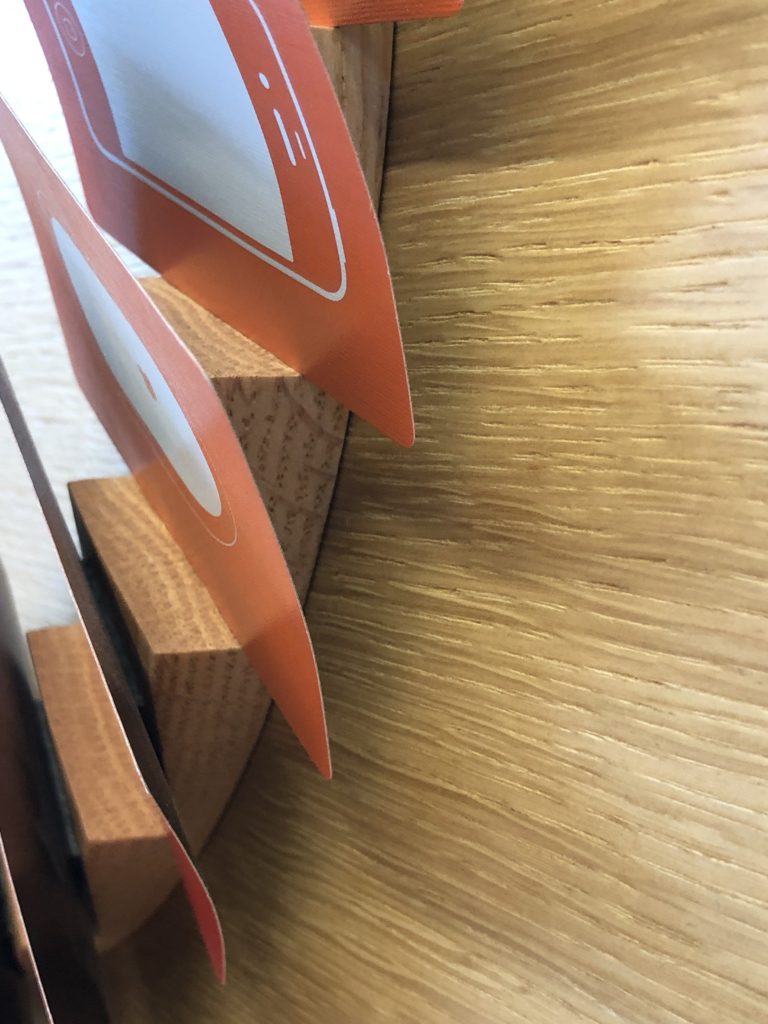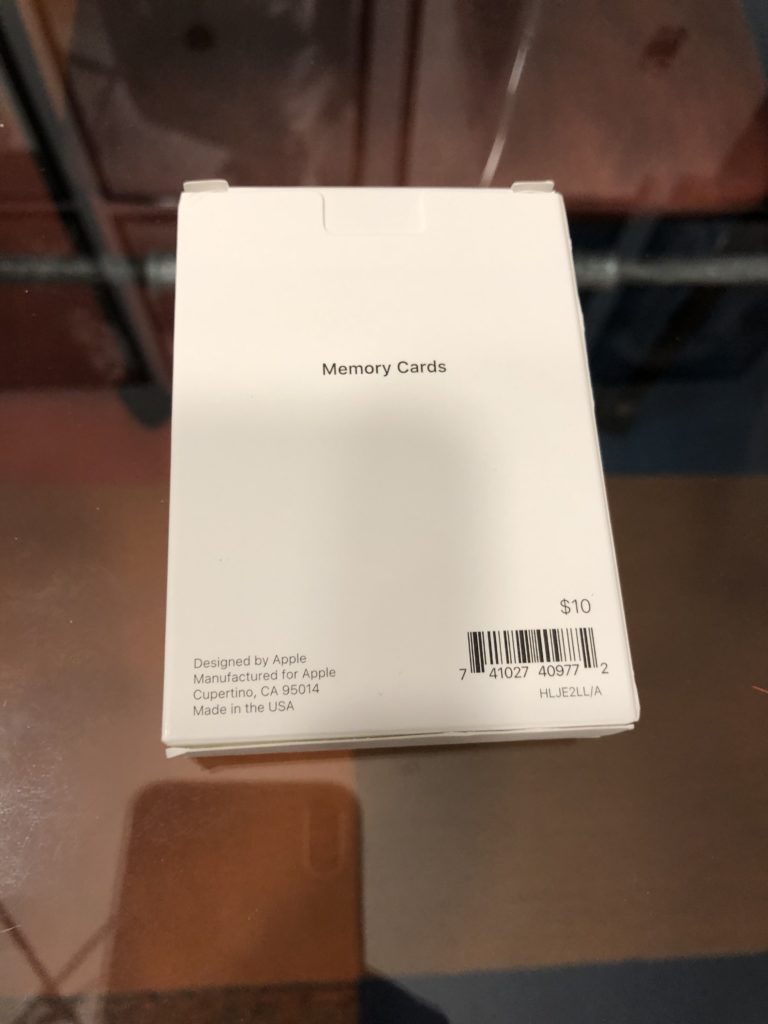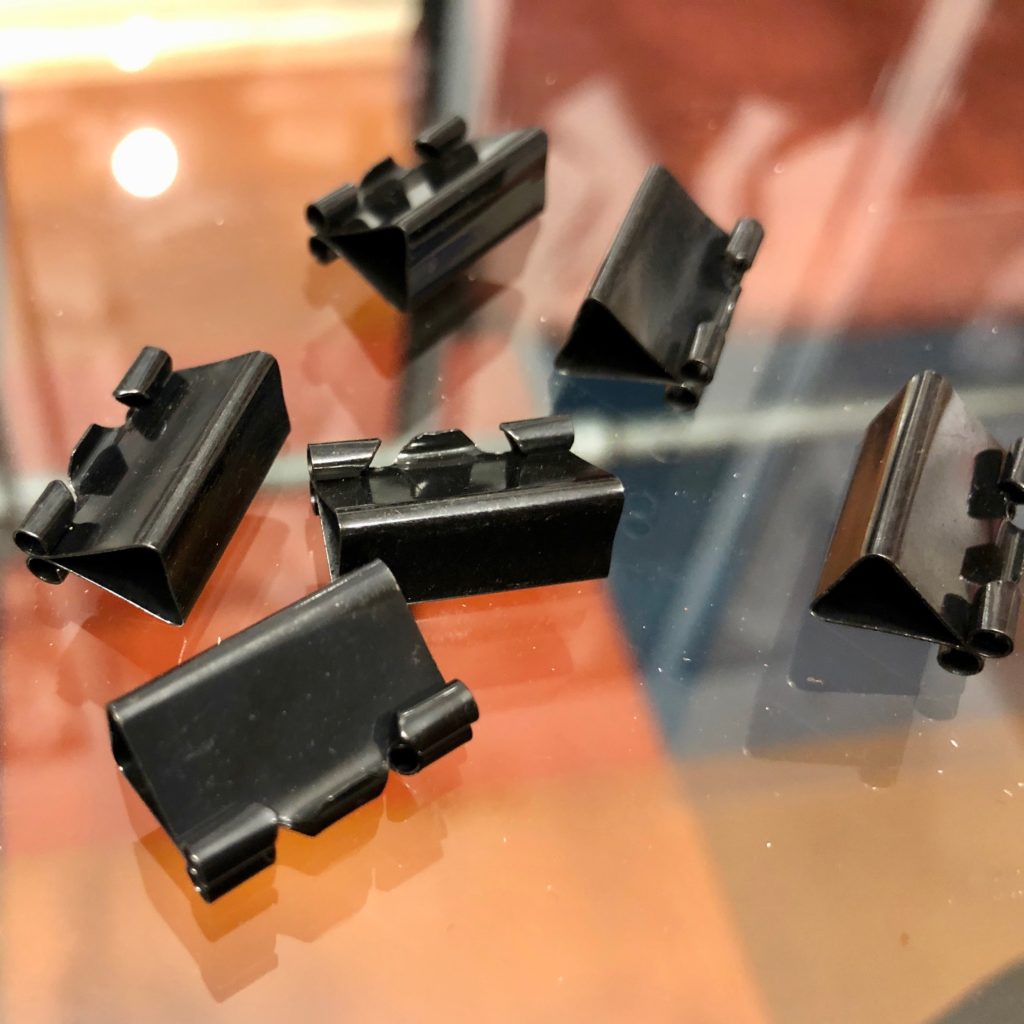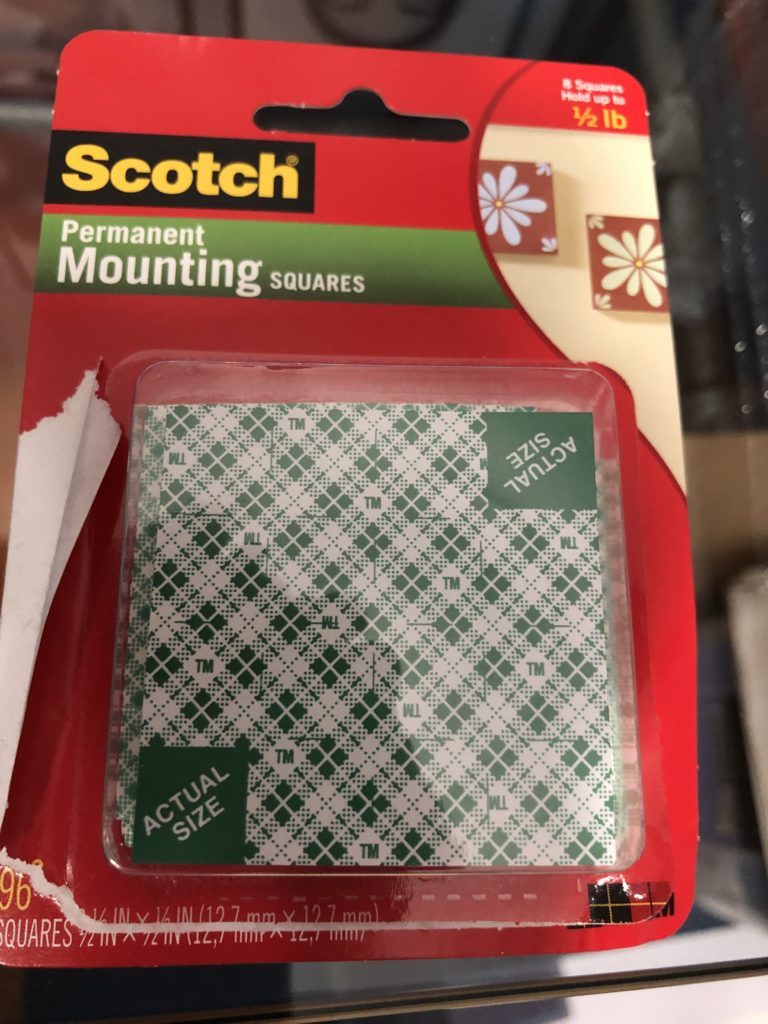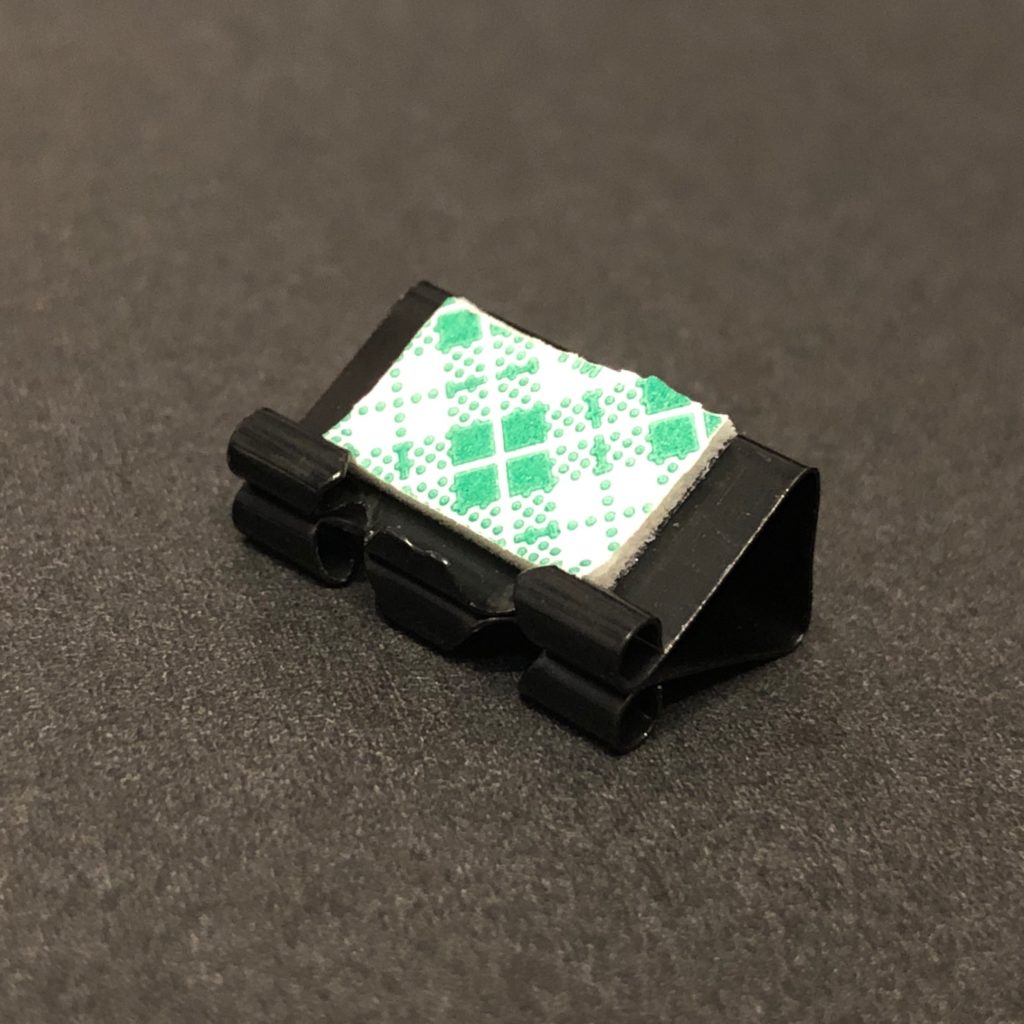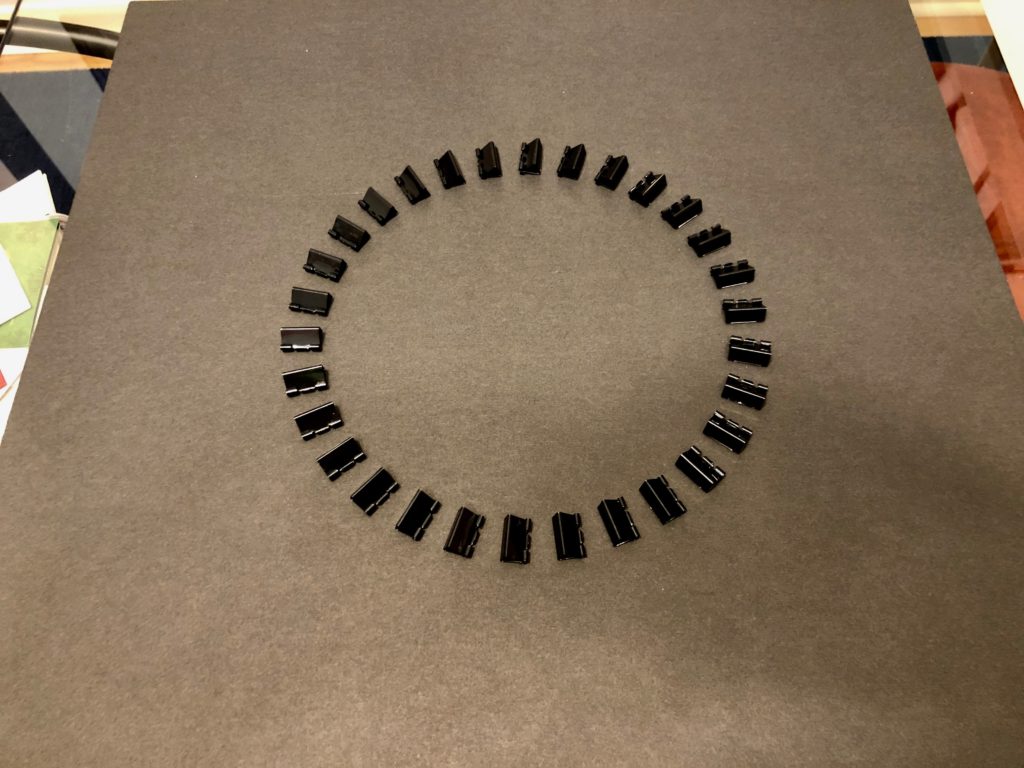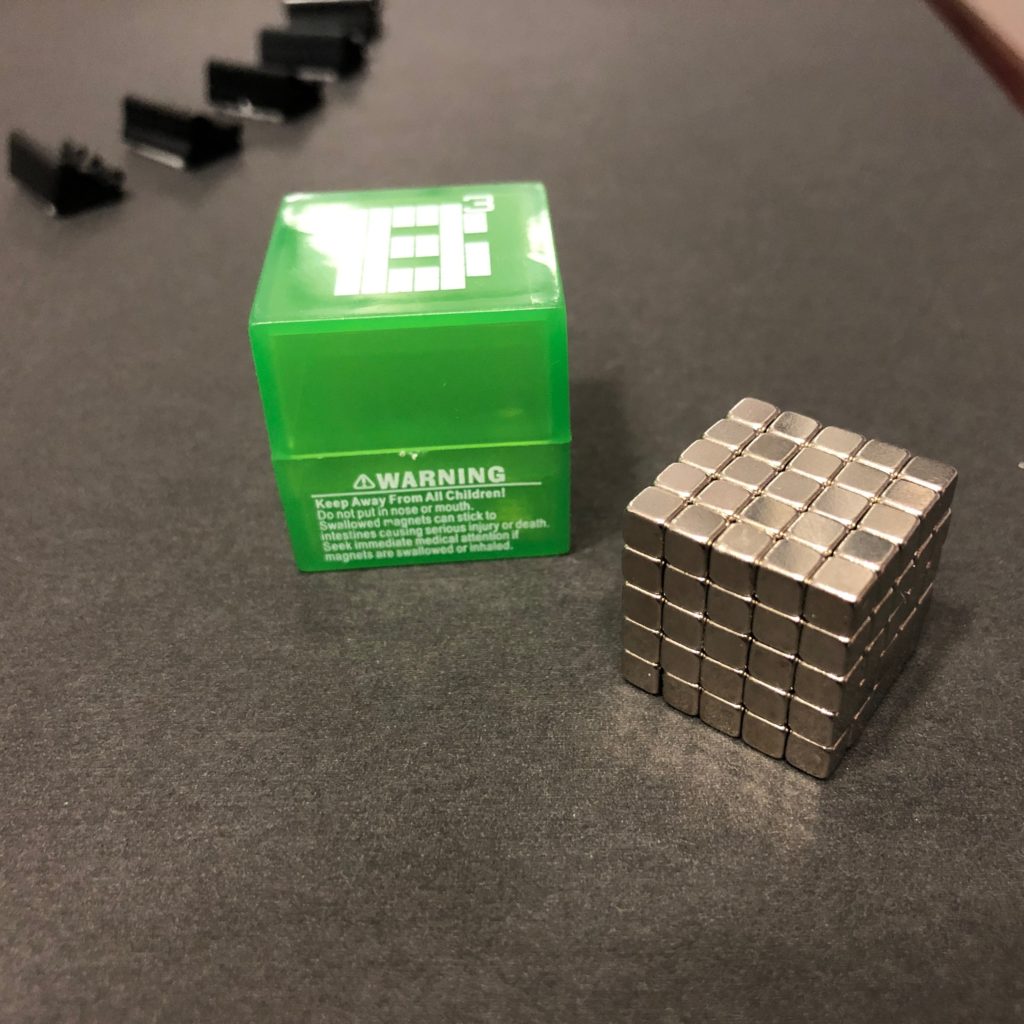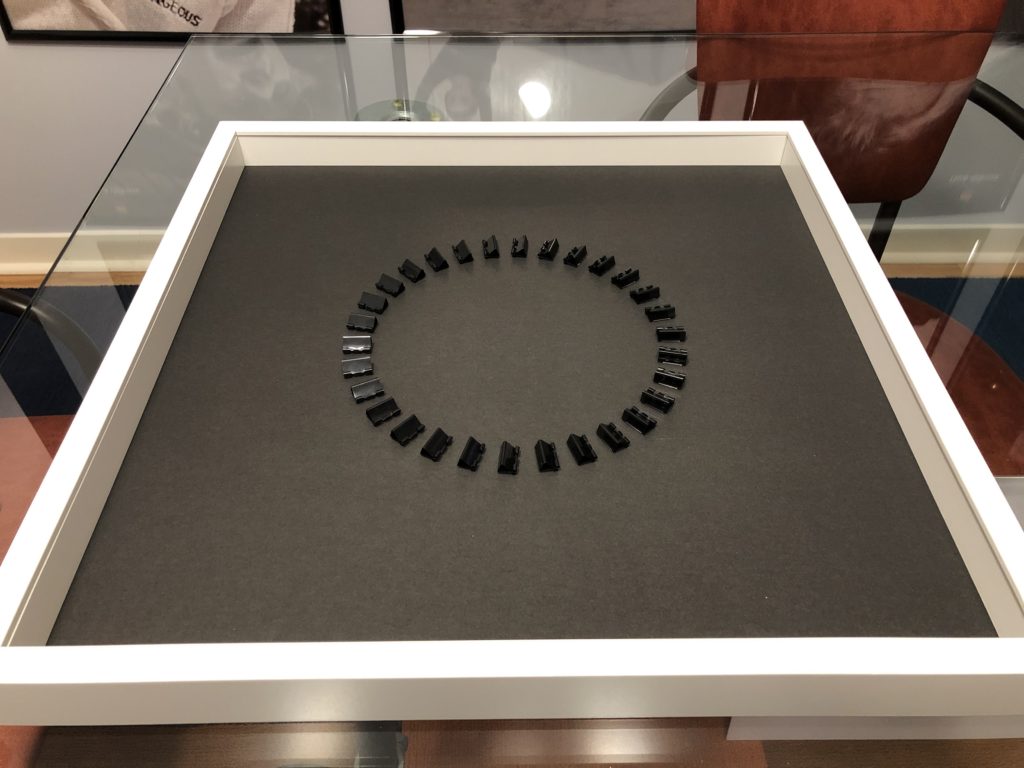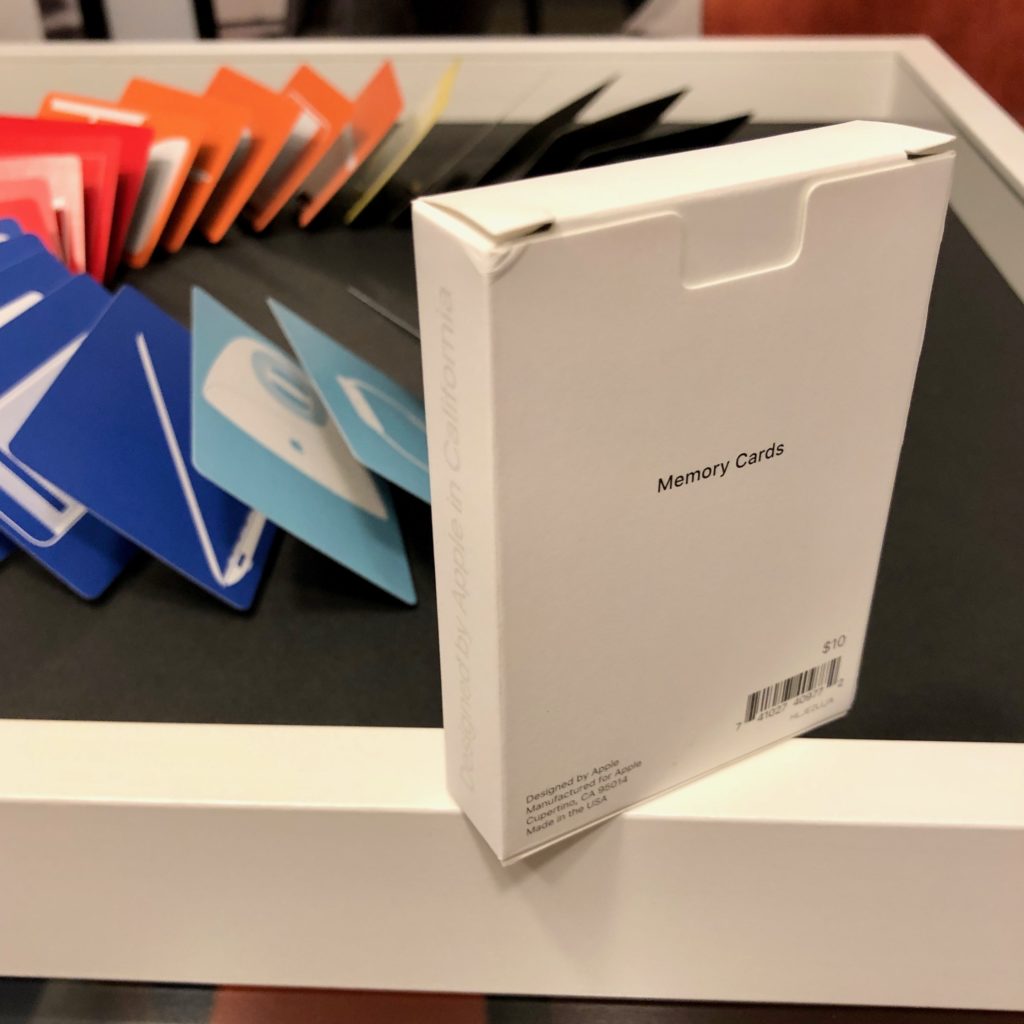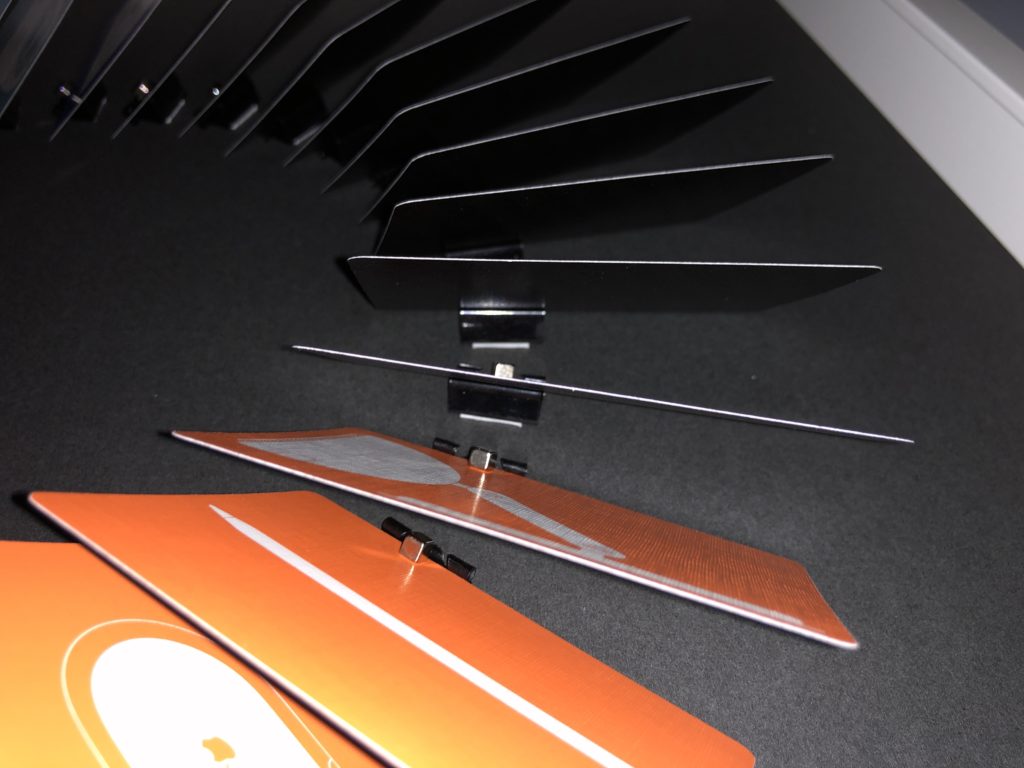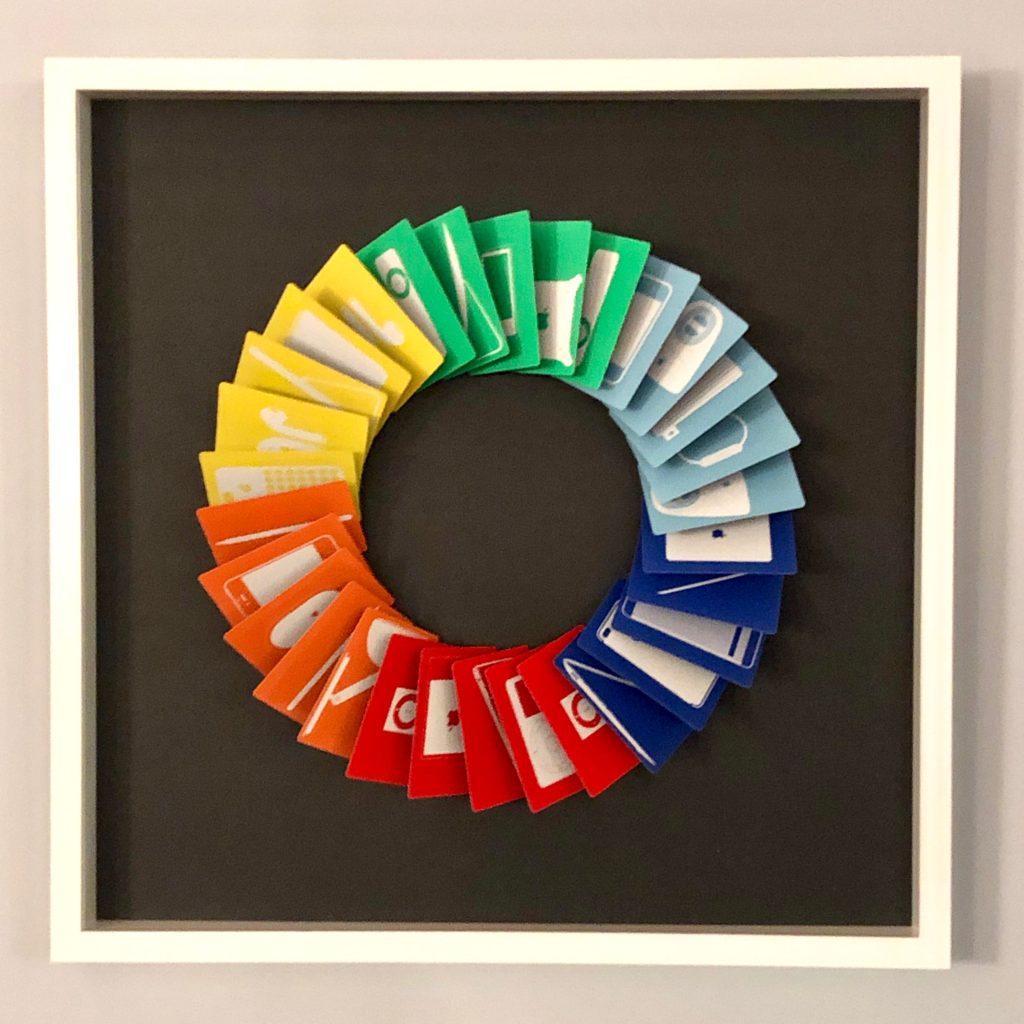When I first visited the Apple Park Visitor Center in December 2017, one of several displays caught my eye. The Visitor Center includes an Apple Store, one of only two Apple Stores that sells Apple logo items to the public. (The other Apple Store that sells Apple logo items is the Infinite Loop Apple Store; each location has a different selection of logo items.)
I was quite enamored by the Apple Memory Cards display at the Apple Park Visitor Center. The Memory Cards feature six colors with four designs, each with a white silhouette of an Apple product. All cards have a black back. There are two of each design, for a total of 48 cards. In the Apple Park Visitor Center store, they are arranged as a wreath floating on the wall. I took several photos showing how the wreath is constructed. In Apple’s display, they use a perfectly initiated wood ring with each card affixed with black doubled-sided tape.
Somewhat oddly, the display at the Apple Visitor Center (and the one I made to replicate it) includes 30 cards; however, the deck only includes 24 different designs. Thus, each color displays four unique designs and one duplicate. Since I was creating a near-reproduction of the display, I went with 30 cards.
Since I do not have the facilities or expertise to construct a perfect oak ring with angled cuts, I put my creativity and problem-solving skills to work to find a relatively inexpensive and widely available substitute that I could construct. For a while, I considered designing a 3-D printed ring in pieces, but a far lower-tech solution hit me one day: binder clips. Standing in for angled cuts in a custom oak ring, I decided to use binder clips affixed with foam tape. Since I didn’t want to permanently damage the Memory Cards, I affixed each card to the metal binder clip with rare earth neodymium magnets. (I used one of my sets of Buckycube magnets. Even though this product is no longer available in the USA, other neodymium magnets can still be purchased on Amazon and elsewhere.)
I began by making a template using the drawing features in Pages. I have included the template, materials/supplies list, and directions here if you wish to make your own version. I’m guessing most people could complete the project for $30–60, depending on many factors. The Apple Memory Cards cost $10 and the IKEA frame is $14.99, but the neodymium magnets can be expensive. If you are willing to use foam adhesive or some other adhesion method, your cost could come in far lower since the 2 main elements here are binder clips and the Memory Cards.
MATERIALS
- Apple Memory Card project template (PDF)
- Memory Cards (available at Apple Park Visitor Center as of January 2019)
- IKEA Ribba or similarly sized frame https://www.ikea.com/us/en/catalog/products/00378436
- Foam core backing to fit frame (black or white)
- 30 x small binder clips
- Permanent double-sided foam adhesive
- 30 x small neodymium magnets (preferably cubes)
SUPPLIES
- X-acto blade
- Metal ruler or straight edge
- Post-It tabs or removable tape
DIRECTIONS
- Remove the clear plastic front from the IKEA frame. You will not use it for this project.
- Cut a strong backing for the frame on which you will mount the binder clips and cards. I used black foam core board from Staples, cut to size with an X-acto blade and metal ruler.
- Print the template. I used 11×17 paper, but you could also print it on 2 sheets of any size paper and tape it together.
- Cut out each rectangle with an X-acto blade. The template is used as a guide and will be discarded so the rectangle cuts do not need to be perfect—you just need to get the angles right so you can align the binder clips precisely.
- Remove the silver wires from 30 small binder clips. (I used black binder clips on my black background, but if I could have found 30 small white binder clips, I’d have used a white background.)
- Using a ruler and Post-It tabs, position the template exactly in the center of the backing. (You could use any removable tape for this, I had Post-It tabs on hand.)
- Using double-sided foam adhesive, stick each binder clip to the backing using the holes cut from the template. Make sure the angles and placement are precise. I used an X-acto blade to trim the double-sided foam adhesive to match the size of each binder clip.
- Assemble the frame with the binder clips facing up. (The front plastic/glass is not used.)
- Attach one card to each binder clip using a small neodymium magnet. The angle of the binder clips and the overlap of the cards will cover the binder clips when viewed from the front. (You could stick the Memory Cards to the binder clips with other methods; I chose magnets to not potentially destroy the cards.)
- Hang your new artwork!
